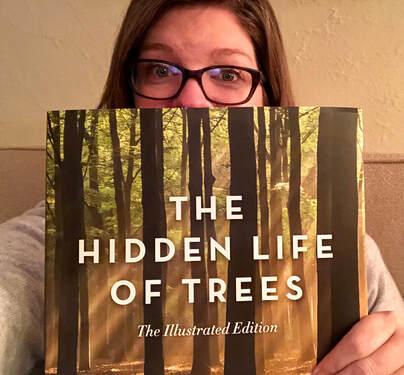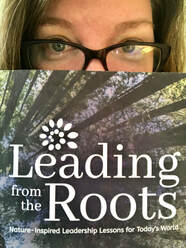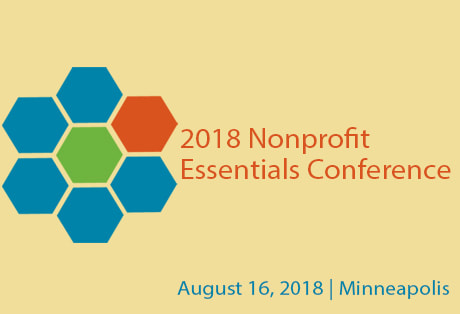|
It's winter here in Minnesota. We are currently covered in more than two feet of snow. Spring may be around the corner, but it feels very far away. I'm craving the company of green, living things. My house plants are doing their best, but I can't wait to walk through a lush forest of leaves again soon. When you are overwhelmed with snow, there is no better book to turn to than the illustrated edition of The Hidden Life of Trees. This is a seriously gorgeous book. Is nature porn a thing? If so, this is it. You can't help but be captivated by these pictures of trees from all over the world. I put a little video below, flipping through some of the incredible pages so you can see for yourself. Peter Wohlleben used to be a forester. He looked at trees as a commodity, lumber to be sold. But then he started to pay attention to the trees. He's no treehugger, but he has collected what he has learned about his experience with trees into this beautiful book. Now, Wohlleben manages a forest in his country of Germany on behalf of the community. Brain Pickings has an excellent summary of the unillustrated version of the book, and you can read an NPR review of the book or listen to the author himself talk about trees as social creatures. I often look to nature for lessons on how to live a better life. We are surrounded by tall, 200 year old teachers who we can learn a lot from about our own humanity. Here are some things I learned from this book I believe we as humans have the potential to replicate for our own growth and sustainability:
There is so much more I could say, but I promise you that if you were to pick up this book yourself, you would not be disappointed.
0 Comments
I have to make another confession. I've recently connected with Kathy and she's become a mentor and friend to me as I am exploring working within living systems and within the realms of organizational development and leadership. I'm grateful to have found such an inspirational guide at this point in my career.
Ok, but there is much more to love about this book other than the fact I'm a fan girl of the author. Leading from the Roots offers us a different way to lead people and organizations. The industrialized way in which we work in Western society, especially in organizations in which we are trying to work on complex social problems, is doing much more harm than good, both inside and outside our organizations. We've come to view the world in a hierarchical, mechanistic way where parts (people) can be replaced and problems are solved with logic, force, and coercion, coupled with punitive policies and procedures that strip the humanity from those with whom we work with and for. There is no better example of this than in our education system. As Sir Ken Robinson describes in this animated TED Talk, our public education system was built in a time when certain things were valued over other things, such as rote memorization over creative or divergent thinking. And the system that was created to reward certain behaviors and abilities no longer serves the students or the needs of our communities (if it ever really did). We treat students like robots who will go out in the world to perform jobs. And we rate their ability to be successful in a capitalist society through standardized testing, which acts as the dashboard through which we start to measure their productivity and potential contributions. This isn't just a problem in education. Name a complex social problem and you can see the ways we have created machines of systems around them. And all of this leads to worse outcomes for our communities, increased disparities and inequities across the board in all categories, and exhausted, burned out people who are treated like replaceable cogs in the machine rather human beings. Leading from the Roots says we don't have to view the world this way anymore. If we use nature as a metaphor and lead with a living systems mindset, we start to see the innate connectivity, interdependency, and reciprocity between people, organizations, and communities, and what it takes for all of them to thrive. Kathy talks about how organizations can evolve their consumptive practices into generous organizations that are multi-dimensional, diverse, and complex. She talks about the seven dynamics of living systems that we can draw on to shift our mindset:
The rest of her book describes the eight design principles nature has already shown us that can create more sustainable organizations. She wraps up the book by talking about what it means to lead from a living systems mindset and how we can create more generous organizations. Each chapter is packed with questions to consider for practitioners who want to lead organizations in a new way. I'm intentionally not saying more about the contents of this book because I sincerely believe that you should buy it and read it for yourself. It will completely change the way you see the world, your organization, and your leadership. If you want a glimpse into what the book is like, check out Kathy's blog and peruse the amazing number of resources she has posted on her website. She embodies the notion of generosity. You can also sign up for her newsletter to have her wisdom delivered directly into your inbox each week. Kathy is committed to starting a living systems movement that can radically shift the way we lead organizations today. Join her. At the 2018 Nonprofit Essentials Conference, I'm going to talk about one of my favorite topics. It's my experience that when most people think of leading from the middle, they think about how to manage up and down: providing direction and guidance to people who report to them and influencing the people they report to. There are certainly challenges of leading from that position and I totally get the desire to want to know what to do if you find yourself there. But, I actually think there is a completely different way to think about leading from the middle that can help you not just with the people that you work with directly, but about your role within the organization and with your organization's partners. If you think of your role in a networked way, and think of yourself less like a funnel between two parts of the organization and more like a hub in interconnected system, you open your perspective and perception of what is required of you from your position. So, if you are going to think of yourself in this way, what do you need to know? What skills do you need to have? How do you make change from this position? I'll be talking about all of this and more at the Nonprofit Essentials Conference! Register for the conference and stop by my session to learn more.
|
Archives
November 2020
Categories
All
|




 RSS Feed
RSS Feed

